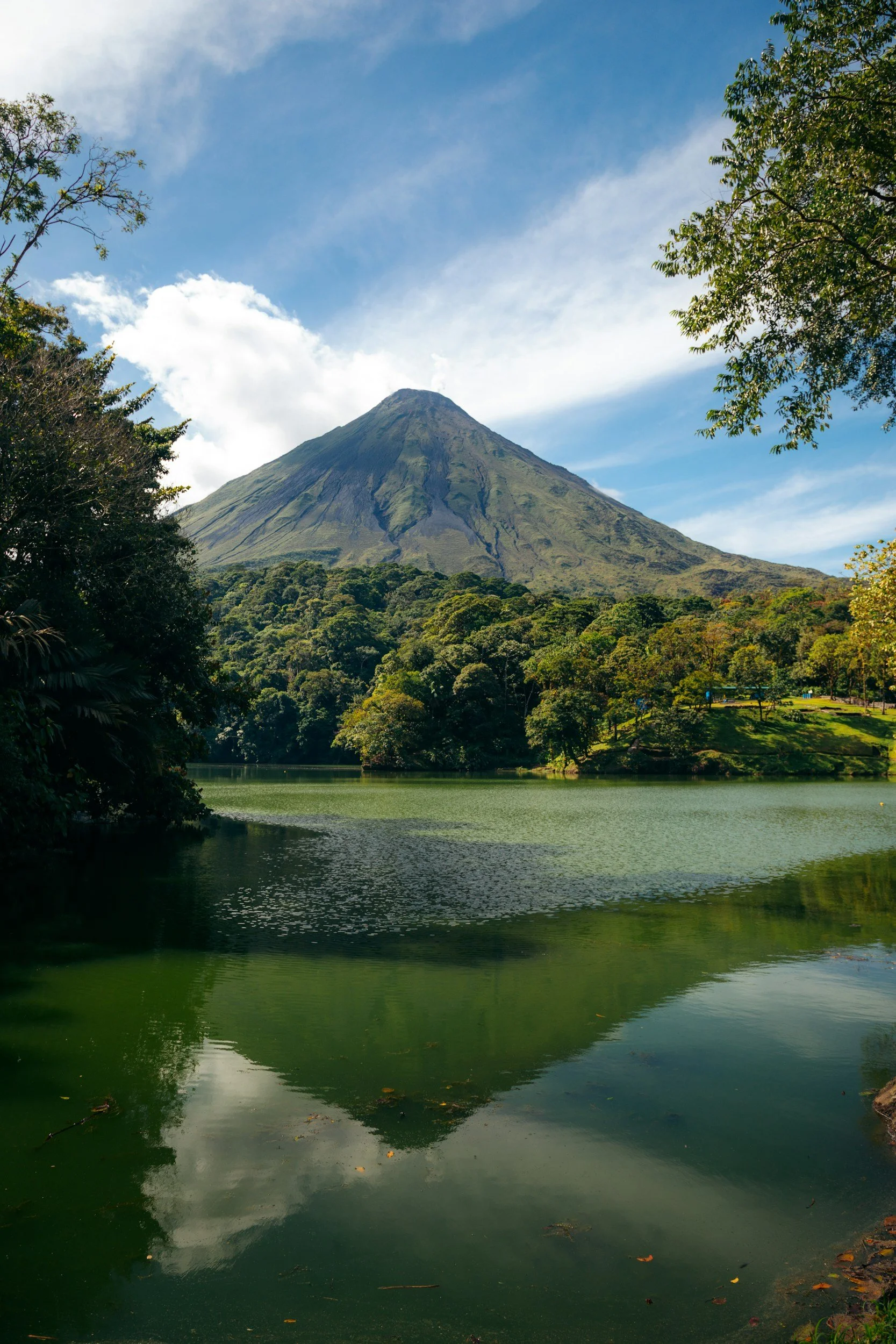
Kayak
Paddle Power: Top 4 Kayaking Spots in Costa Rica
-

Tortuguero Canals
Dubbed “Costa Rica’s Amazon,” Tortuguero’s winding canals are a kayaker’s paradise. Many of them were created for banana transportation in the early 20th century. Today, they’re a protected part of Tortuguero National Park. The serene waters cut through lush rainforest, offering an intimate connection with nature, and the lack of motorboats in many areas makes for a peaceful paddle.
Rare Wildlife: It’s one of the best places in Costa Rica to spot the elusive jaguar, though sightings are rare. More likely, you’ll encounter river otters, four species of sea turtles and basilisk lizards (the ones that run on water). You’ll also spot an incredible variety of birds, from kingfishers to toucans and jacanas more typically known as Jesus birds, since they also walk on water.
Cultural Context: The area is home to Afro-Caribbean communities with a rich cultural history, reflected in local music, food such as Rice and Beans (a coconut milk and spice infused dish often paired with fall off the bone chicken) and traditions.
Pro Tip: Tortugeuro National Park is only accessible by boat and its best to go early morning for the best wildlife sightings and cooler temperatures.
-

Golfo Dulce
This calm gulf on the southern Pacific coast is one of only four tropical fjords in the world. It’s still waters are perfect for kayaking and it’s far enough away from the beaten tourist path to be very quiet and serene. Stay in Pavones and spend your days surfing and kayaking.
What’s Unique: The bioluminescence here is magical. Paddle at night to see glowing plankton light up your strokes and feel like you’re paddling through a galaxy.
Wildlife Bonus: Humpback whales and dolphins are regular visitors. The gulf is bordered by mangrove forests, vital for the ecosystem and a haven for exotic birds like the mangrove hummingbird, which is endemic to Costa Rica.
Pro Tip: Pair your kayaking adventure with a visit to nearby Piedras Blancas National Park. Here you can visit one of the largest trees in southern Costa Rica. It takes you and 39 of your closest friends linked arm to arm to surround the tree’s diameter.
-

Lake Arenal
Paddling with a view doesn’t get much better than Lake Arenal, with the iconic Arenal Volcano as your backdrop and the green rain drenched hills of Costa Rica surrounding you.
What’s Unique: Lake Arenal was expanded by flooding the town of Arenal in 1979 for hydroelectricity, making it Costa Rica’s largest lake and a vital energy source. The lake’s calm waters make it beginner-friendly, and you’ll enjoy cool mountain breezes.
Wildlife Bonus: Spot kingfishers, herons, and occasionally howler monkeys near the shore.
Pro Tip: Watch for afternoon winds—they can make paddling more challenging. After a calm morning on the lake, and a dip in the many hot springs in the area, stop into La Fortuna for a heartwarming and delicious meal at Tierra Mia Restaurant.
-

Chora Island - Samara
Chora Island (Isla Chora) lies off the coast of Samara Beach, a tranquil beach town on Costa Rica's Nicoya Peninsula. This small, uninhabited island is just a short paddle away from the mainland, about 1.5 miles (2.4 km) and takes roughly 20–30 minutes each way, depending on your pace and the current. It’s recommended to kayak at high tide or go with a tour guide like those from Pato’s Surf School.
What’s Unique: The journey to Chora Island takes you through calm, clear turquoise waters, ideal for beginner and intermediate kayakers. The visibility is excellent, giving you a glimpse of marine life below. Once you arrive, you’ll be greeted by a secluded pinkish-sand beach—a rarity in Costa Rica. The sands get their color from crushed coral fragments.
Wildlife Bonus: The area is home to a variety of sea creatures, including sea turtles, colorful tropical fish, and even small reef sharks. Dolphins are frequently spotted during the paddle, and if you're lucky, you might catch a glimpse of humpback whales during their migration (August–October).
Pro Tip: There is little to no shade on the island, and that harsh equatorial sun is real, so bring lots of sunscreen, water or other refreshing drinks and don’t forget your snorkel gear to explore the reefs once you land on the island.
